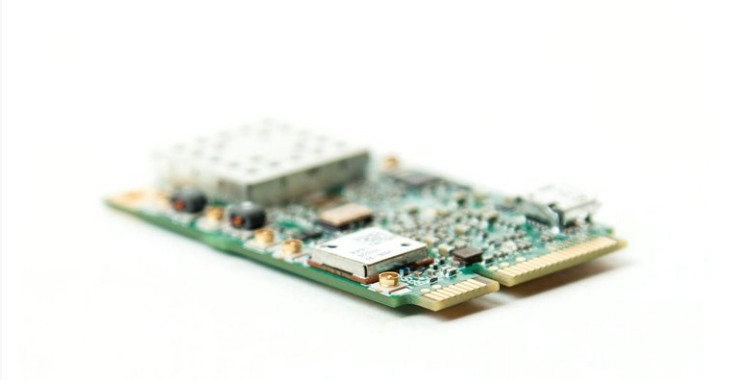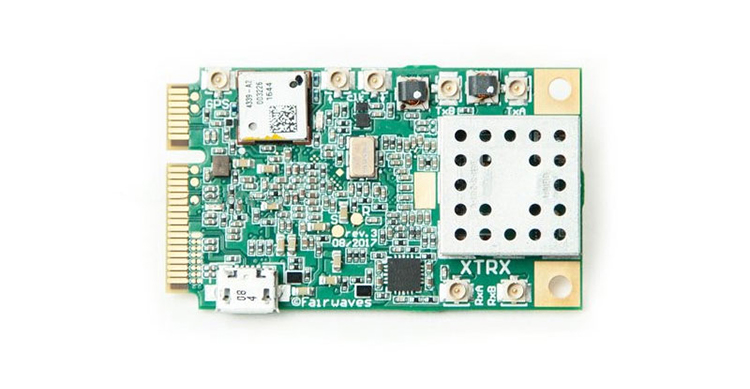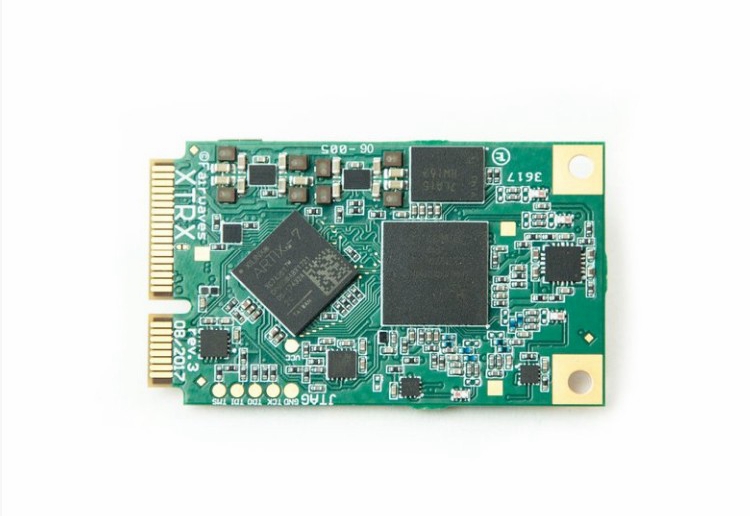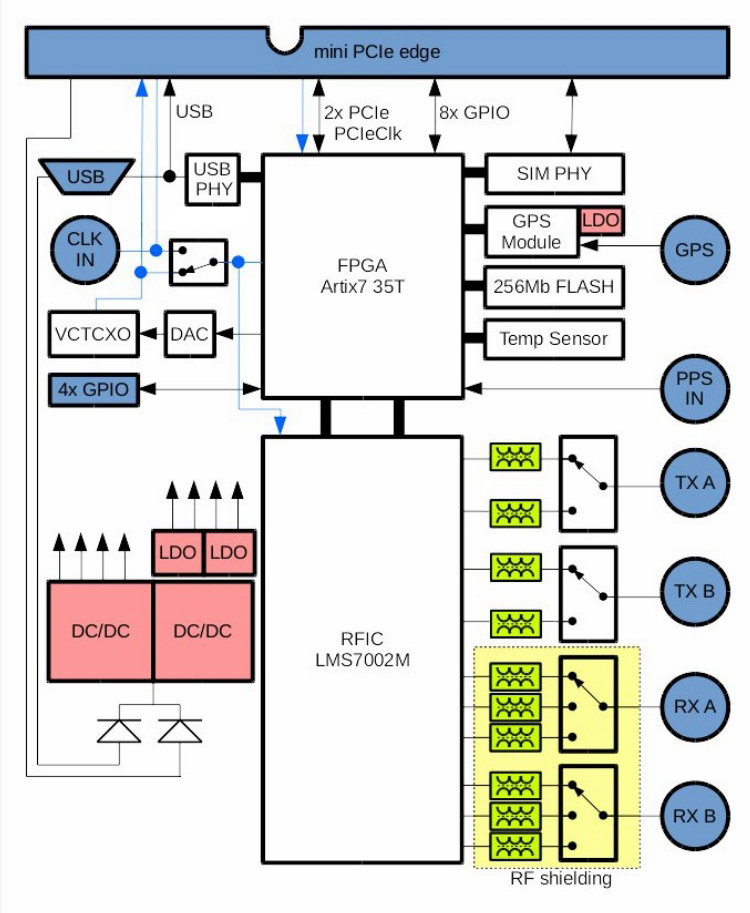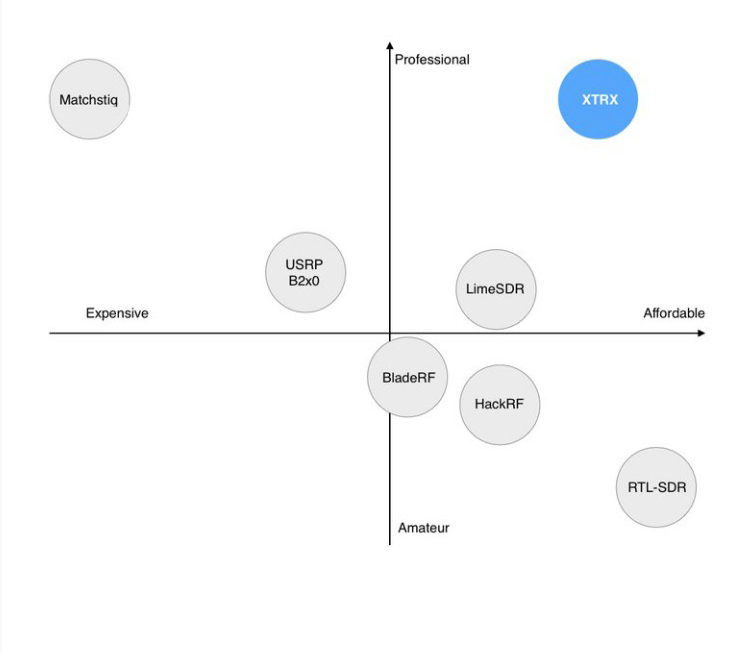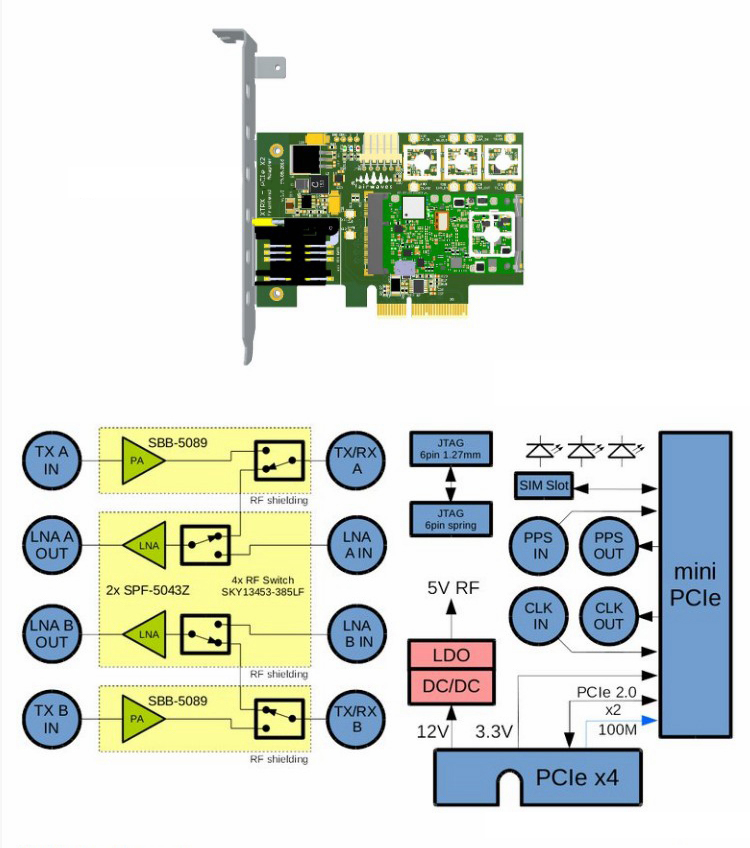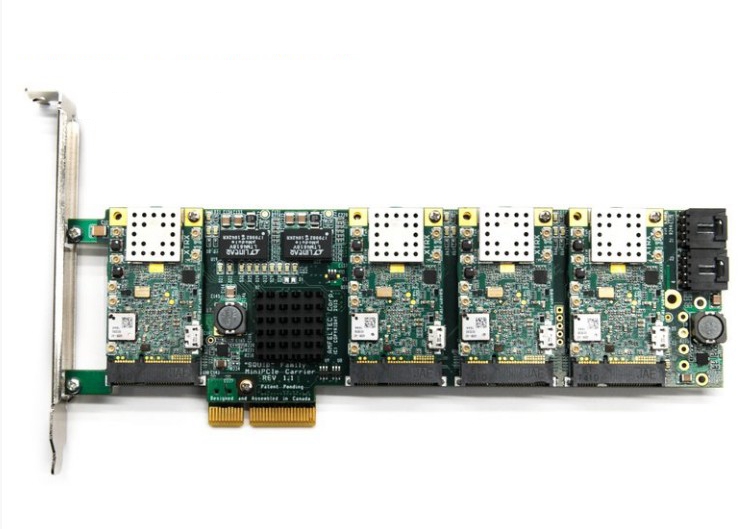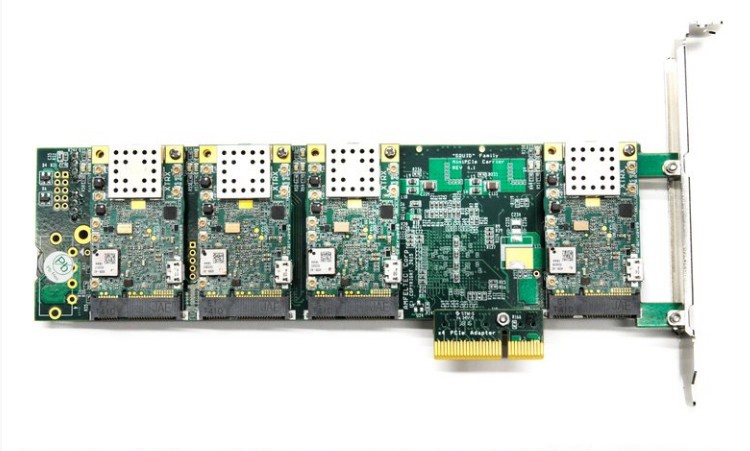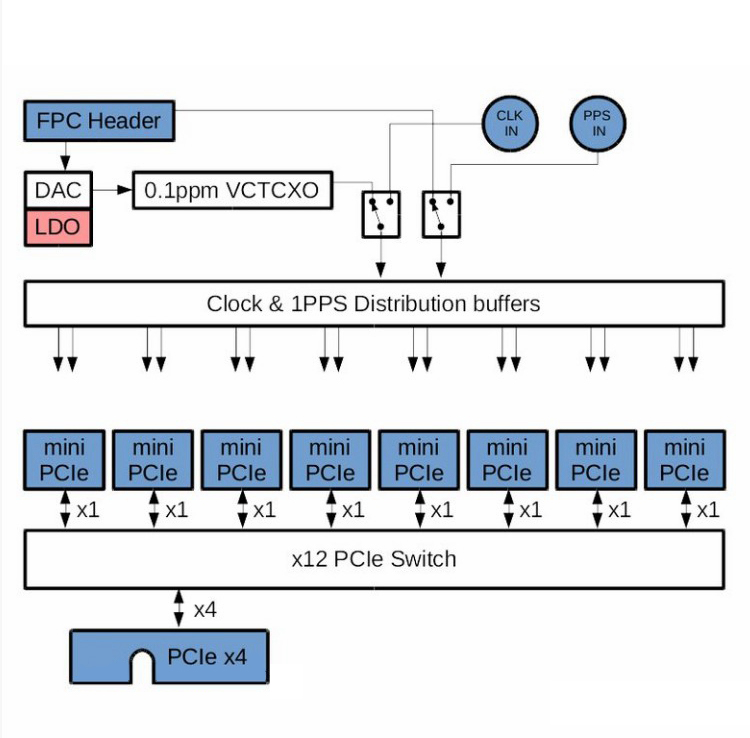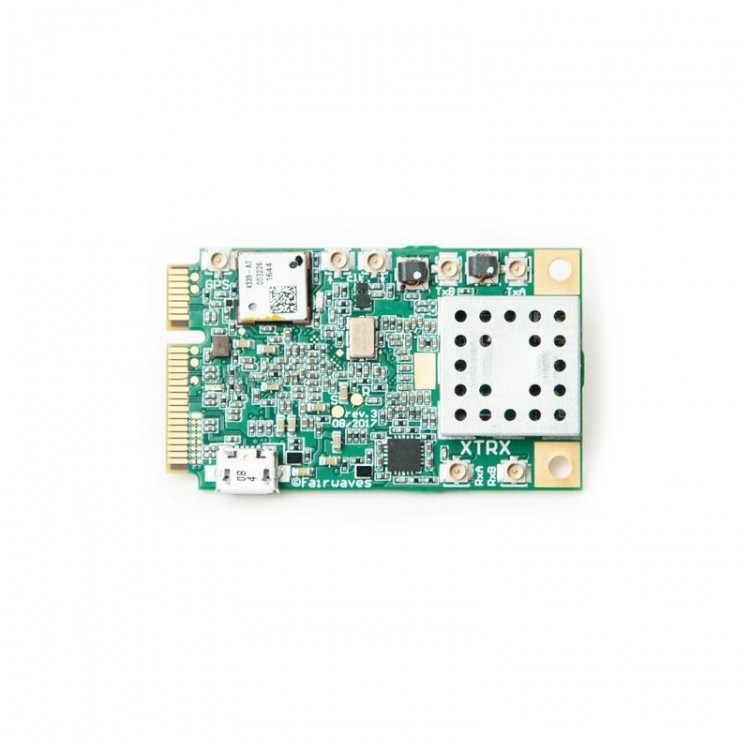
| Quantity | 3+ units | 10+ units | 30+ units | 50+ units | More |
|---|---|---|---|---|---|
| Price /Unit | $676.09 | $662.29 | $641.60 | $614.00 | Contact US |
Xtrx CS Version Software Defined Radio High Performance Mini PCIe Adapter Board SDR for Fairwave with USB Serial SIM Card Reader
Description:
- XTRX is the smallest, easy to char - in software-defined radio (SDR). It's affordable and high performance. Its professional-grade embedded technology is designed to enable next-generation wireless solutions from prototype to production.
- While LTE modems and GPS receivers are commodity parts that are easily purchased from your favorite electronic components store and added to your project, in order to embed SDR, you'll have to spend precious time and money on custom design - until now. With XTRX, you can easily add to the SDR and focus on what your customers really need.
Features:
- First-class performance: 2 x 2 MIMO, 120 MSPS SISO / 90 MSPS MIMO, etc.
- Compact shape: As a Mini PCle card, it is the smallest SDR on the market.
- Thermal coupling: carefully designed heat sink thermal interface.
- Stable clock: Accurate enough for cellular standards.
- GPSDO: Vehicle GPS discipline oscillator.
- Synchronize clock: Share the same clock source on many boards.
- SIM Card reader: Displays as a typical USB serial SIM card reader.
- High speed GPIO: 12 in total, 8GPIOs can form four matching LVDS line.
Applicable people:
XTRX isn't for everyone. We hope that most people interested in XTRX already have some experience with SDR. If you have never used SDR before, XTRX may be a bit overwhelming for you. XTRX may be right for you if you:
- Deploying SDR-based solutions in the field
- Want to develop a massive MIMO system just to realize you don't have a million dollars
- Curse your SDR (or USB) with delay, reliability or cable
- If this describes you, or you're looking for a better SDR, don't worry and keep reading!
Use cases:
- Massive MIMO systems: XTRX boards can share the same sampling and reference clocks, making it easy to build massive multiple-input multiple-output (MIMO) systems.
- Monitoring Large amounts of bandwidth: By synchronizing the clock, multiple XTRX boards can jointly monitor very large blocks of RF spectrum. For example, eight synchronized XTRX boards can monitor nearly 1GHz of bandwidth.
- LTE Cellular: The XTRX's combination of accurate, stable clock, onboard GPSDO and low-latency PCIe bus makes LTE possible.
- Software-defined 2G/3G/4G modem: When plugged into a Mini PCIe slot reserved for a cellular modem, the XTRX displays as a USB SIM card reader.
- Drones and embedded systems: The power consumption B nose C size and performance of UAVs and carbon entry systems are very important. The XTRX's Mini PCIe profile and GPIO enable you to connect to a variety of single-board computers, sensors and actuators.
- DSP acceleration: You can use FPGA to accelerate real-time signal processing; The high-speed, low-latency PCle bus allows switching data back and forth between the host CPU and the XTRX's FPGA.
Specification:
- RF panel: Lime Microsystems LMS7002M FPRF
- The FPGA chip uilinxArtad. 366 m
- Channel: 2 x 2 MIMO
- Sampling rate: ~0.2 MSPS to 120 MSPS SISO / 90 MSPS MIMO
- Tuning range: 30 MHz - 3.8 GHz
- Rx/Tx range:
10 MHz - 3.7 GHz
100 KhZ-3.8 GHz, signal level reduction
- PCIe bandwidth:
PCIe X2 Gen 2.0:8 Gbit /s
PCIe X1 Gen 2.0:4 Gbit /s
PCle X1 Gen 1.0:2 Gbit /s
- Reference clock:
Frequency: 26 MHz
Stability: GPS/GNSS locked stability & LT; 10 PPB, 500 PPB at startup
- Overall size: Full size Mini PCle (30x51mm)
- Bus delay: < 10js, stable over time
- Synchronization: Multiple XTRX boards are synchronized to achieve massive MIMO
- GPIO:
FPC edge connector: Four lines (can be used as two differential pairs)
Mini PCIe Reserve Pin: Eight wires (including two differential pairs,1pps input,1pps output,TDD switch control and three LEDs)
Advantage:
- Initially, we want to use for Artix 7 one billion transceivers on FPGA to realize the USB 3. This will make the adapter is very simple, but it turns out the transceiver technique with USB3 (OOB) signaling outside help. Finally, we decided to use for Broadcom USB3380 chips. You will not be able to via USB 3 to obtain the same as the original PCIe model performance level, but we have been through the adapter test running LTE eNodeB (as well as other applications), and work well. We can use USB3380 chip internal 8051 microcontroller to achieve further performance improvement, this is we have not yet used.
- This USB 3 adapter is perfect for fast application development - you can use XTRX anywhere you don't have access to the Mini PCle, such as your laptop, where you can plug in and out anytime, refresh the FPGA image without restarting, etc. In addition, the USB3380 has four GPIO pins, which we use for JTAG simulations, so if your FPGA experiments go wrong, you'll always be able to unravel the XTRX.
- The PCIe card securely attaches to the XTRX board (not included), so it can be used in a standard PCIe x4 slot. It consists of an RF front end with low noise amplifiers (LNA) and power amplifiers (PA) with power output of up to 100mW per channel. Time division duplex allocation (TDD) switches are used for applications such as TDD LTE. You can bypass the front end by connecting the cable directly to the XTRX. The adapter achieves full 10 Gbit/s raw bus bandwidth and plugs into an X4 / X8 / X16 PCle slot, but it does not fit into an x1 slot unless the slot has an open end. The edge six-pin JTAG connector is compatible with JTAG-HS2 cables, so you can easily program and debug FPGAs. The board also has a tiny slot for SIM card.
- XTRX PCIe Octopack: If you need a large MIMO deployment or need to monitor a large amount of spectrum, then you will need one of the limited availability Octopacks. This single PCIe card strap has eight removable XTRX boards, metal mounting brackets, cables for all GPS and MIMO Tx/Rx ports, and dedicated boards for syncing all eight XTRX boards.
- Octopack based on a switch, can be in a single x4 PCle between 2.0 and 2.0 8 x1 PCle routed. This means that you cannot use at the same time all eight XTRX plate full bandwidth, but it can still run LTE - A and other applications. Octopack all eight XTRX plate can be used to accompany the synchronization of synchronization, the synchronization plate has a more stable clock generator, and through the attached FPC cable connected to the first XTRX. Using external clock synchronization port (CLK_IN/PPS_IN), multiple Octopack can be synchronous, thus creating 32 x32, 64 x 64 even bigger MIMO system.
Package Included:
- 1 x SDR
- 1 x Antenna
- 1 x Adapter with aluminum shell
- 2 x PCIe with front end adapter
- 1 x PCIe Octopack